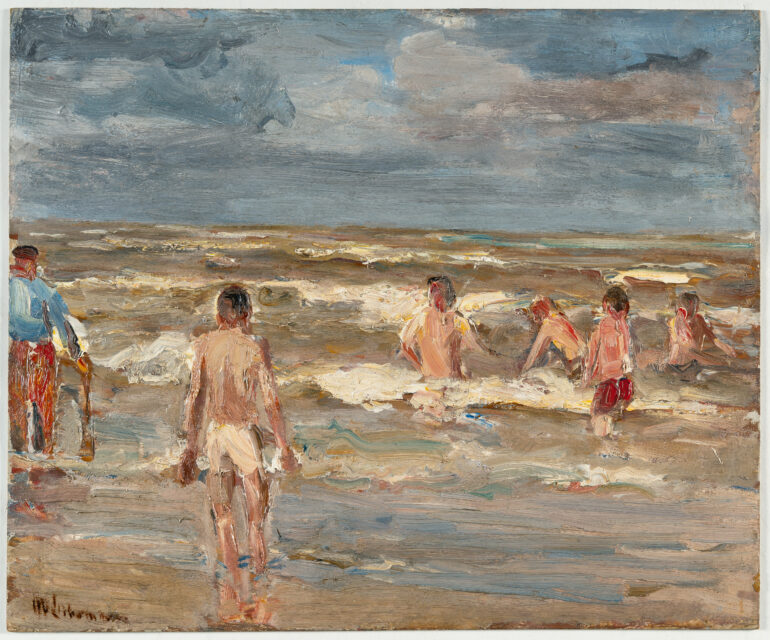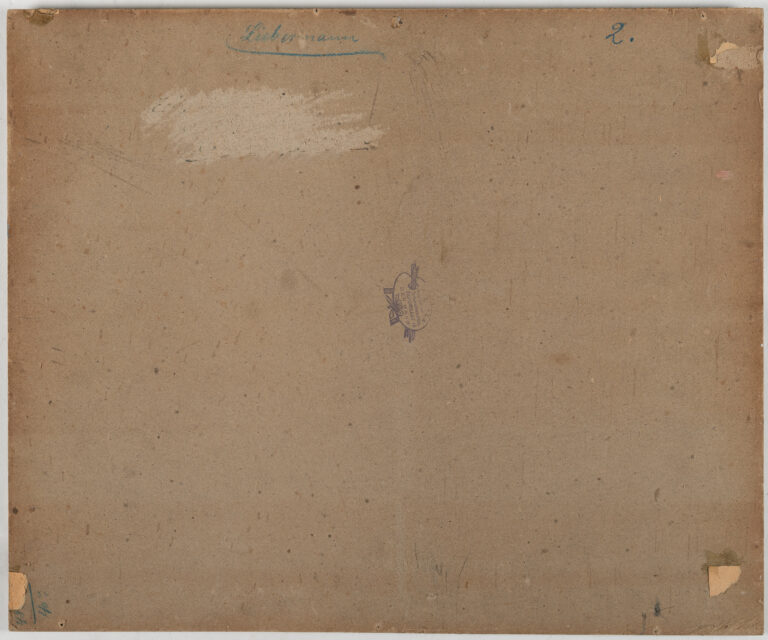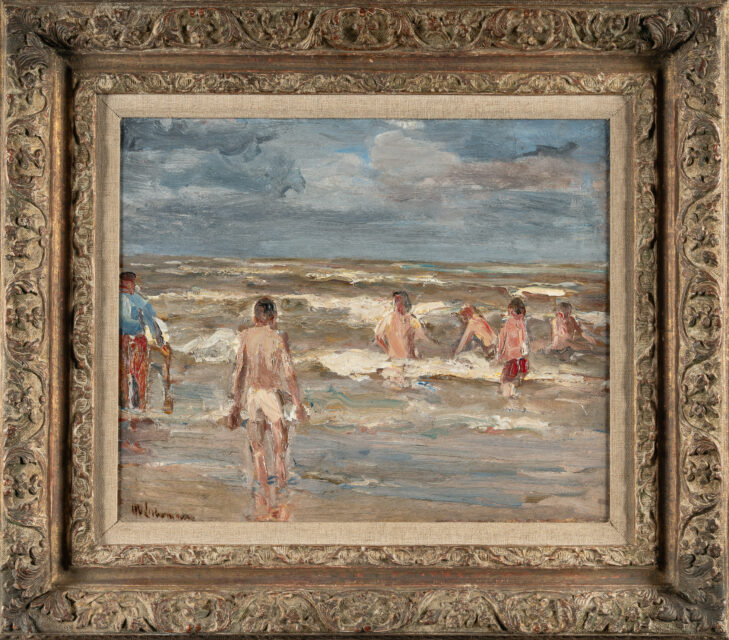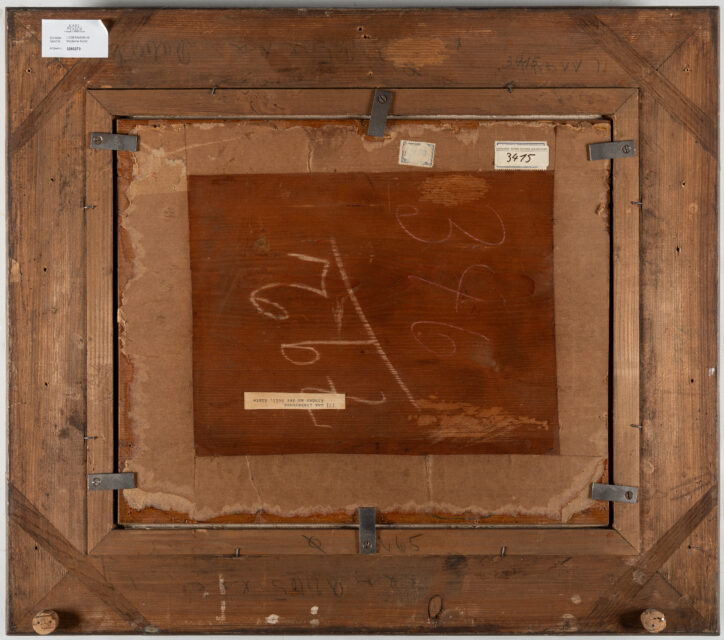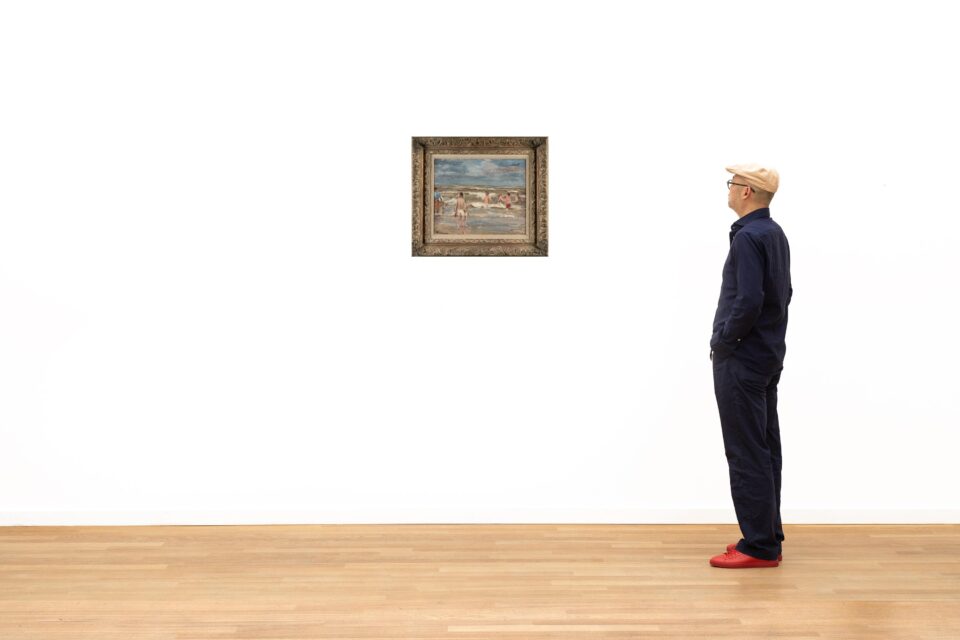
Bathing boys (children on the Dutch coast)
Details
Literature:
Alt, Adolf, Gemäldesammlung Professor Schmidt (…), in: Mitteilungen der Galerie Helbing, Munich, Vol. II, No. 17, 1 October 1913, p. 146.
Provenance:
Hugo Helbing, Munich 18 October 1913, lot 110, with b/w illus. plate 10;
Albert Daberkow, Bad Homburg, ca. 1957 (according to Eberle);
Kunsthandlung Pieroth, ca. 1957 (according to Eberle);
Georg Schäfer Collection, Schweinfurt, labelled and with inv. no. 3415 on the reverse of the frame;
Private collection, Southern Germany.
Descrizione
– From the important group of works of the Bathing Boys, which Liebermann repeatedly depicted over the decades
– Created on the Dutch coast, which Max Liebermann loved so much
– Compositionally comparable to the painting of the same name in the Stadtmuseum Berlin
The subject of bathing boys forms a certain constant in Max Liebermann’s extensive oeuvre and is repeatedly depicted by him in a wide variety of ways. The first idea for this motif came to Liebermann in the summer of 1875, when he was bathing in the sea near Zandvoort in North Holland. He painted “In the Swimming Pool” (Eberle 1875/20), which, however, does not show the boys bathing, but rather dressing afterwards on a covered jetty. It was almost twenty years before Liebermann took up the motif again at the end of the 1890s and painted the two large-format paintings “Bathing Boys – Boys in Zandvoort” (Eberle 1896/2; Neue Pinakothek, Munich) and “Bathing Boys” (Eberle 1900/1; Stadtmuseum Berlin) as well as some preparatory studies. Now the further developed motif actually shows boys bathing in the waves. At this time, Liebermann also depicted cheerful summer beach life in numerous other works. “The way he (Max Liebermann) looks at the sea (…) is not at all romantic. For him, the sea is the vast expanse of water whose salty freshness cools us in the summer months, which beckons us to swim and sail, on whose dazzling sand adults promenade and laze, children play, beach chairs and bathing carts line up; it is a sea of bathers. His view here knows nothing of memories, of relationships, it is entirely of today and completely unbiased.” (Erich Hancke, Max Liebermann. His Life and Works, Berlin 1914, p. 387).
According to Eberle, the “Bathing Boys” offered here was created in 1907, even though its composition is very similar to the large-format painting “Bathing Boys” from 1900. Liebermann shows his own direct view of the sea, as if he had stood directly in the rolling waves. Seen from behind, a boy in white swimming trunks stands on the beach, appearing to be carefully checking the water temperature with his toes. On the right, four other boys have already waded into the surf waves; the boy in red trousers has just been caught by a wave of cold water. On the left is a beach attendant, whose red and blue clothing forms a contrast to the boys’ naked upper bodies, but at the same time provides a colour-balancing counterpoint to the boy with the red swimming trunks. This painting conveys the character of an oil study made directly on the beach, with manageable dimensions and a spontaneous painting style. Liebermann acquired the canvas on site in The Hague, as the stamp on the back attests. Despite the rather small format, Liebermann creates a feeling of great expanse and light-heartedness thanks to the clear image detail and the bright, summery colours.
Inscribed “Liebermann” and “2.” by hand on the reverse and with the stamp of a painting supplies shop in The Hague. Handwritten numbers and labels on the reverse of the frame (there typographically titled “Kinder an der holl. Küste”, among others).
Eberle 1907/43.
* Tutte le informazioni includono la commissione a carico dell'acquirente (27%) senza IVA e senza garanzia. Salvo errori.
** Tutte le informazioni più la commissione a carico dell'acquirente e l'IVA e senza garanzia. Salvo errori.
*** Con riserva: L'offerta è stata accettata al di sotto del limite. L'acquisizione dell'opera potrebbe essere ancora possibile nella nostra vendita post-asta.
R = Le opere d'arte regolarmente tassate
N = Opere d'arte soggette a tassazione differenziata e provenienti da un paese non UE
Non è consentita la riproduzione e la distribuzione privata o commerciale di tutte le illustrazioni delle opere esposte nell'archivio della mostra e dell'asta. Tutti i diritti riservati.



